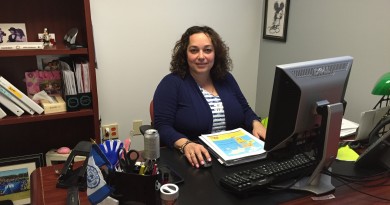Working Through the Gloom
The True Meaning Behind Seasonal Depression.
By Gabi Drobot, Assistant Editor
For those who live in the northern part of the world, it is almost certain that you have heard the term seasonal depression.
Seasonal depression tends to manifest itself around the month of November and can last throughout the winter months when days are shorter and weather is colder.
With Lynn University located in the warmth of sunny South Florida, some might thinkg seasonal depression does not exist. However, that is not the case.
Contrary to popular belief, seasonal depression, medically referred to as seasonal affective disorder, or SAD, does exist in Florida and can affect people anywhere in the world.
The mood disorder occurs at the same time each year, with symptoms ranging from fatigue and hopelessness to social withdrawal and depression.
Although we are used to associating this condition with locales that have colder weather, gloomy skies and fewer hours of daylight, it also occurs in areas with abundant sunshine and warmer average temperatures.
“I think [SAD] exists here, but not in the same way it does in the north,” said Maya Jones, a sophomore. “Especially with the holiday season, I feel like it can still be triggered for some people.”
The holiday season is when daylight is the shortest, which contributes to increasing SAD.
Luckily, the closer to the equator you reside, the less common SAD is. However, it can still affect people in those climes. Although Florida is the Sunshine State, its above-average rainfall can contribute to SAD.
Yet for some Lynn students from colder regions and prior experiences with SAD, South Florida has been the cure to SAD.
“I went to high school in New Hampshire, and when the winter months would come, it was awful,” said Shane Streibal, a sophomore. “Kids would dread going outside to see the bare trees and grey sky; everything felt dull. It is much better for me here in Florida.”
However, for Florida natives, this may not be the case.
Having nearly year-round consistent weather patterns can also contribute to SAD, with a constant longing for change. When that change does not come as it may in other regions, the average day can seem quite repetitive.
The bottom line: Every individual is affected differently by factors and changes in weather and climate . SAD is just one example of how one’s mental health is delicate and should always be taken care of. On-campus resources, including Lynn’s Counseling Services, are always available to Lynn students and can be easily reached at (561)-237-7237.






